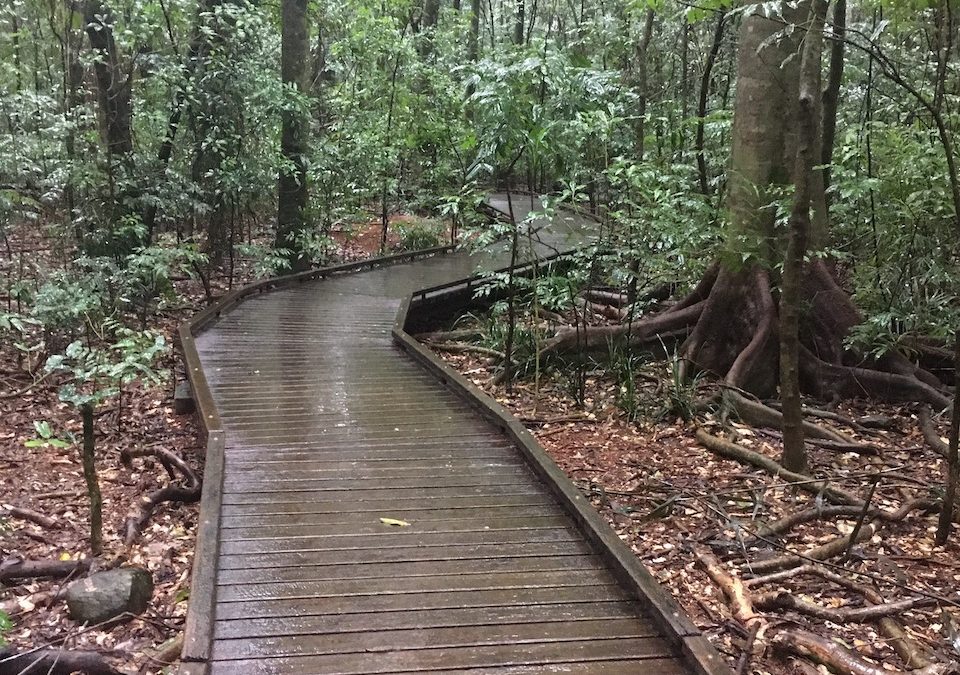When I have visitors who are keen to see a rainforest I take them to the Victoria Park NR.
There are so few remnants that there aren’t a lot of choices . You could consider Lumley Park to see Flying Foxes, Rocky Creek to picnic with Platypus or Booyong NR to get the ‘explorer’ experience of rediscovering lost tracks but Victoria Park, with its convenient boardwalk, free of leeches and wait-a-whiles, it’s toilets, picnic tables and interpretive signs is hard to beat.
With a rudimentary knowledge of rainforest ecology, flora, fauna and local history it’s not hard to impress overseas visitors or, as I’ve been lucky enough to do, a class of ten year olds. Strangler Figs, Paddymelons, Blackbeans, Catbirds, Giant Stinging Trees, Red Cedar, vines, buttresses and tales of the now gone ‘big fig tree’ are all winning topics; my ten year olds held hands and formed a circle to mimic the big fig tree circumference. If luck and timing is right then Noisy Pittas, fireflies, luminous fungi, Land Mullets, and all sorts of brilliant butterflies and pigeons can be seen.
Politicians dignitaries, tourists, picnickers or school children, Victoria Park has always been a popular spot. The Northern Star reported in May 1908, that “Rous Mill school and Dalwood combined held a picnic at Victoria Park… a procession started from Rous Hill school at 10am… about 200 school children were present, making a total of about 300, including adults… games were indulged in after lunch, which was served on the green… a photographic group was taken of the assemblage, and afterwards a visit was paid to the giant fig tree… residents in the vicinity were energetic in making things successful by repairing roads, and provided boilers and swings… the assemblage retired early, on account of dairying… after tea fireworks were freely exploded and a large bonfire was lighted” In September, 1936, the Star reported “The big fig tree at Victoria Park, Dahwood, was the centre of attraction yesterday morning for the ladies accompanying the delegates to the Local Government Conference. There were about 30 visitors and several local ladies… all favourably impressed with the beauty of the country through which they passed and admired the virgin scrub in which the fig tree is found”.
A visitor reported in the Tenterfield Courier in 1912 that he’d witnessed a tree “of astounding dimensions… no ordinary Moreton Bay Fig” measuring “123’ round the girth, and 153’in height, while the area over which it deposits its figs is half an acre… a peculiarity is that the centre of it is a natural tank or basin, which holds about 500 gallons of water… never known to be dry”. The tree was so tall that the legend has persisted Captain Cook saw it as he sailed past, though it is not mentioned in his diary or log. The tree was damaged by a storm in 1970 and died soon afterwards.
Short of a waterfall or a coffee shop, it’s hard to improve on a visit to Victoria Park.
Contributed by Ken Dorey


